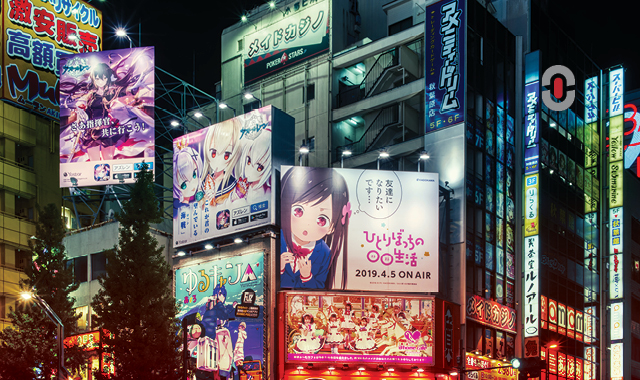- Home
- Resource Center
- Articles & Videos
- Lost in “Localization”: Anime Edition
8 July 2024
| by 1-StopAsia
Lost in “Localization”: Anime Edition

Anime is stylized Japanese animation that has taken the world by storm. With numerous titles being translated and localized for Western audiences, anime localization has become quite controversial.
That’s partly because the process of localizing anime often dilutes the intended meaning. What’s more is that in many cases, due to media policies and censorship, it’s necessary to fundamentally change the anime localization to prevent young viewers from being exposed to excessive violence or content of a mature nature.
With that being said, anime localization comes with a number of challenges. That’s exactly what this article will explore, including some key case studies of actual anime localization fails. Keep reading to find out more!
Some of the main challenges that come with anime localization
Anime localization may be viewed as the process of localizing anime content for an intended audience, with anime localization being the process of taking anime content and its words and going beyond translating the text word for word, but enhancing and sometimes changing the meaning so that it fits a particular cultural context. With this in mind, there are some significant challenges when it comes to anime localization that should be seriously considered. Here are just a few of these.
- Media policies: many countries have specific media policies regarding their audiences and audiovisual content that comes from other countries. For example, American television has specific policies on the type of content that children can be exposed to. In the 1960s, for instance, taking foreign audiovisual content such as anime required that themes around death or other mature content to be completely removed. As such, viewers were left with gaping plot holes and incomplete content because many scenes were removed or were outright wrongly localized for anime.
- Jokes and puns: beyond media policies, there are also issues with translating and localizing jokes and puns in anime. Of course, jokes and puns are hard to translate on any occasion but with anime, it becomes even more challenging because there is no literal translation for a joke and often, if a literal translation is used, its meaning will get completely lost for the audience.
- Dubbing: another important anime localization challenge comes with dubbing. Here, the number of syllables in each line is often counted as is the number of times that a character opens their mouth in a scene. Then, the translation is matched to the mouth movements to reflect the original meaning so that it appears natural to the new audience. However, with anime, this is often not done correctly, resulting in a poor viewing experience.
- Culture: culture is another fundamental challenge when it comes to anime localization. Many Western countries use variations of censorship when it comes to certain scenes in an anime series or program. Taking American audiences as an example, violence or themes around death often have to be completely cut from the scene to ensure that sensitive viewers are not exposed to more mature themes. This, and other cultural differences can make anime localization difficult and cumbersome, especially in maintaining the original plot idea.
- Unnatural translations: finally, when it comes to anime localization, there are sometimes issues encountered in terms of unnatural translations. There are often no direct word-for-word translations and a meaning that’s as close as possible to the original needs to be used. However, this often results in a diluted meaning and can confuse audiences.
Case studies of failed anime localization
Unfortunately, when it comes to anime localization, there are many case studies where it has failed or where its intended meaning has gotten lost on its audiences. Below are just a few examples of anime localization fails that are worth mentioning.
- One Piece: while the original version of this anime was aimed at older children and teens, the localized version was aimed at younger viewers. Naturally, the dark themes of violence resulted in scenes and episodes being eliminated, leading to plot holes that confused the audience. In addition, this anime’s dialogue often completely deviated from the original meaning.
- Demon Slayer: in this case, fans of this globally popular anime were baffled by the nonsensical English title for the show’s second season, calling it “egregious” and “no good”. That’s because the original title was too adult for the English localized version.
- Ghost Stories: here, dubbing problems quickly arose as the English dub was completely different from the original. The result was called a “parody”.
- The 4Kids’ Yu-Gi-Oh: in this case, we see problems with mature content being shifted and localized for a younger audience, dubbing problems, the Americanization of Japanese names, etc.
- Naruto: with the popular Naruto, many of the intense fighting scenes and a lot of blood had to be removed. As for the dubbing, this was also problematic because it resulted in trading the original opening theme for a new original English dub.
- Pokémon: as one of the biggest franchises in anime, a Pokémon episode made some localization errors related to culture. Here, jelly doughnuts were used instead of rice balls, under the assumption that young American audiences would not know what rice balls were. However, in the scene, it was clear that there were no jelly doughnuts at all and as such, this localization gaffe is worth mentioning, too.
- Speed Racer: from completely changing the series title name to the terrible lip-syncing, many audience members felt that the sentence sound was sped up and incoherent.
- Sailor Moon: examples of challenges with localizing Sailor Moon include changes to the original including Westernizing names, altered dialogue, dated slang, and excessive censorship.
- Cardcaptors: in addition to the title change and the Americanized theme song, there was also heavy censorship here with practically all traces of romance being removed so much so that some episodes were entirely cut out.
- Glitter Force: the problems with Glitter Force extend to so many changes being made that the original is barely recognizable. Moreover, the dialogue was considered “cringy” and elements of Japanese culture have been removed.
- Mew Mew Power: with this anime, all the characters were given new, unsuitable names, major plot points were left out, heavy censorship was involved, and the theme song’s dub was considered a complete failure.
Final thoughts
Anime localization can be absolutely powerful and effective, reaching new audiences across the globe. However, poor anime localization can certainly leave a bad taste for audiences that want to experience the original vibes, plot, theme, music, character names, and cultural nuances. With this in mind, anime localization must take into account a series of factors in order to create a streamlined and pleasant viewing experience as opposed to alienating audiences through gaffes such as incorrect dubbing, excessive censorship, literal translations, and more.

Desi Tzoneva
Content Writer at 1-StopAsia


